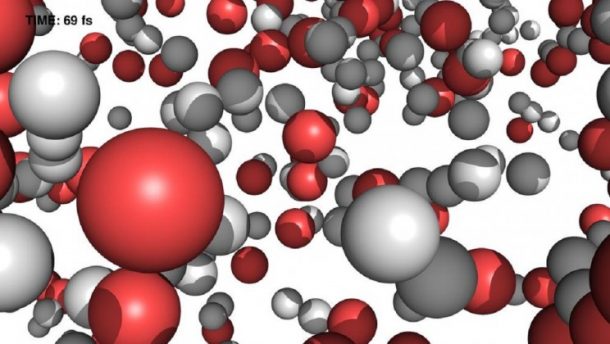A team of scientists has recently developed the world’s fastest water heater which has so much power that it can heat water from room temperature to 100,000 degrees Celsius in less than a tenth of a picosecond or a millionth of a second. The researchers blasted the water molecules with a powerful X-ray beam to produce an exotic state of water. The research conducted at the Department of Energy’s SLAC National Accelerator Laboratory is helping the scientists better understand the peculiar characteristics that were observed with water at different temperatures and well beyond its plasma point.
Stove and ovens are the more traditional heating methods that are typically used. For thousands of years, people have been heating various objects by transferring the heat of one object to another. The microwave enhanced the process with an interesting technique, radiation. More specifically microwave radiation. Microwaves are a form of electromagnetic radiation which is commonly used in radio, television and cellular devices amongst many other devices. Microwaves are not capable of removing atoms of their electrons. Inside a microwave oven, the waves operate at frequencies which are absorbed by water molecules instantly. Each molecule absorbs the waves and makes them vibrate. The energy they gain from there is then absorbed by the surrounding molecules, making the target molecules to vibrate. The energy is further distributed throughout the object making its temperature to rise.

The latest system relies on a mechanism which at first resembles a traditional microwave. Electromagnetic waves are shot towards a body of water in the beginning which absorbs the energy instantly. Caleman, the lead researcher from the Center of Free-Electron Laser Science said, “It is certainly not the usual way to boil your water. Normally, when you heat water, the molecules will just be shaken stronger and stronger.” This is not an ordinary technique to heat water. When the temperature rises quickly, the electron in the molecules become too excited for the nucleus to hold them. The electrons are then released from the atom and leave the pair of hydrogen and a single oxygen particle behind as the positively charged particles.
The process is repeated several times causing the water body to rapidly build up the positive charge. The positive charges in the water repel each other and force each other in opposite directions. This results in a massive release of energy in the form of heat. Caleman said, “Our heating is fundamentally different. The energetic X-rays punch electrons out of the water molecules, thereby destroying the balance of electric charges. So, suddenly the atoms feel a strong repulsive force and start to move violently.” In less than 75 millionths of a billionth of a second, the water changes its phase from liquid to plasma. However, the change is so rapid that the water doesn’t get a chance to boil into steam first. Olof Jonsson, co-author of the study said, “While the water transforms from liquid to plasma, it still remains at the density of liquid water, as the atoms didn’t have time to move significantly yet. It has similar characteristics as some plasmas in the sun and the gas giant Jupiter but has a lower density. Meanwhile, it is hotter than Earth’s core.”
Through the research, the scientist is hoping to get more understanding of how water interacts with its surroundings. This particular niche of study is based on a substance which is essential for our existence. Nicusor Timneanu, the co-author said, “The study gives us a better understanding of what we do to different samples. Its observations are also important to consider for the development of techniques to image single molecules or other tiny particles with X-ray lasers.” Jonsson said, “Water really is an odd liquid, and if it weren’t for its peculiar characteristics, many things on Earth wouldn’t be as they are, particularly life.”



Your discussion of using microwaves is incorrect. The authors of this research used X radiation. which is completely different from microwave radiation. Microwaves are effectively low-energy electromagnetic waves, whereas X radiation is extremely high energy waves. So your discussion is completely misleading. Also, the physics of why microwaves heat water is very different from what you describe. I am a microwave scientist with over 50 years of experience in this field.